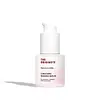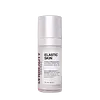What's inside
What's inside
 Key Ingredients
Key Ingredients

 Benefits
Benefits

 Concerns
Concerns

 Ingredients Side-by-side
Ingredients Side-by-side

Water
Skin ConditioningButylene Glycol
HumectantGlycerin
Humectant1,2-Hexanediol
Skin ConditioningHydroxyacetophenone
AntioxidantAcetyl Glucosamine
Skin ConditioningNiacinamide
SmoothingHydroxyethylcellulose
Emulsion StabilisingAllantoin
Skin ConditioningCentella Asiatica Extract
CleansingSodium Hyaluronate
HumectantBeta-Glucan
Skin ConditioningStephania Tetrandra Root Extract
Skin ConditioningScutellaria Baicalensis Root Extract
AstringentPolygonum Cuspidatum Root Extract
AntioxidantPEG-40 Hydrogenated Castor Oil
EmulsifyingCamellia Sinensis Leaf Extract
AntimicrobialGlycyrrhiza Glabra Root Extract
BleachingChamomilla Recutita Flower Extract
MaskingRosmarinus Officinalis Leaf Extract
AntimicrobialCaprylic/Capric Triglyceride
MaskingHydrogenated Lecithin
EmulsifyingPolysorbate 20
EmulsifyingHexylene Glycol
EmulsifyingStearic Acid
CleansingCholesterol
EmollientCeramide NP
Skin ConditioningPropolis Extract
Skin ConditioningRosa Canina Fruit Oil
EmollientTocopherol
AntioxidantPropanediol
SolventEthylhexylglycerin
Skin ConditioningCaprylyl Glycol
EmollientCI 16255
Cosmetic ColorantPalmitoyl Tripeptide-1
Skin ConditioningArginine/Lysine Polypeptide
Skin ConditioningWater, Butylene Glycol, Glycerin, 1,2-Hexanediol, Hydroxyacetophenone, Acetyl Glucosamine, Niacinamide, Hydroxyethylcellulose, Allantoin, Centella Asiatica Extract, Sodium Hyaluronate, Beta-Glucan, Stephania Tetrandra Root Extract, Scutellaria Baicalensis Root Extract, Polygonum Cuspidatum Root Extract, PEG-40 Hydrogenated Castor Oil, Camellia Sinensis Leaf Extract, Glycyrrhiza Glabra Root Extract, Chamomilla Recutita Flower Extract, Rosmarinus Officinalis Leaf Extract, Caprylic/Capric Triglyceride, Hydrogenated Lecithin, Polysorbate 20, Hexylene Glycol, Stearic Acid, Cholesterol, Ceramide NP, Propolis Extract, Rosa Canina Fruit Oil, Tocopherol, Propanediol, Ethylhexylglycerin, Caprylyl Glycol, CI 16255, Palmitoyl Tripeptide-1, Arginine/Lysine Polypeptide
Water
Skin ConditioningButylene Glycol
HumectantGlycerin
HumectantCaprylic/Capric Triglyceride
MaskingSqualane
EmollientDiheptyl Succinate
EmollientPentylene Glycol
Skin Conditioning1,2-Hexanediol
Skin ConditioningHelianthus Annuus Seed Oil
EmollientDioscorea Villosa Root Extract
Skin ConditioningCopper Tripeptide-1
Skin ConditioningOligopeptide-1
Skin ConditioningNicotiana Benthamiana Hexapeptide-40 Sh-Polypeptide-76
Skin ConditioningNicotiana Benthamiana Hexapeptide-40 Sh-Polypeptide-47
Skin ConditioningAcetyl Sh-Hexapeptide-5 Amide Acetate
Skin ConditioningCeramide NP
Skin ConditioningNiacinamide
SmoothingCentella Asiatica Extract
CleansingBeta-Glucan
Skin ConditioningSodium Hyaluronate
HumectantHaematococcus Pluvialis Extract
AntioxidantSodium PCA
HumectantAnanas Sativus Fruit Extract
Skin ConditioningPanthenol
Skin ConditioningAllantoin
Skin ConditioningBetaine
HumectantBisabolol
MaskingZinc PCA
HumectantC12-20 Alkyl Glucoside
EmulsifyingC14-22 Alcohols
Emulsion StabilisingSodium Polyacrylate
AbsorbentCapryloyl Glycerin/Sebacic Acid Copolymer
Skin ConditioningCarbomer
Emulsion StabilisingSorbitan Olivate
EmulsifyingCellulose Gum
Emulsion StabilisingHydrogenated Lecithin
EmulsifyingCetearyl Olivate
Mannitol
HumectantPhosphatidylcholine
EmulsifyingCetyl Alcohol
EmollientDecyl Glucoside
CleansingDipotassium Phosphate
BufferingPropanediol
SolventSodium Chloride
MaskingSodium Hydroxide
BufferingSodium Phytate
Tocopherol
AntioxidantXanthan Gum
EmulsifyingPotassium Phosphate
BufferingPotassium Sorbate
PreservativeSodium Benzoate
MaskingPhenoxyethanol
PreservativeEthylhexylglycerin
Skin ConditioningHydroxyacetophenone
AntioxidantWater, Butylene Glycol, Glycerin, Caprylic/Capric Triglyceride, Squalane, Diheptyl Succinate, Pentylene Glycol, 1,2-Hexanediol, Helianthus Annuus Seed Oil, Dioscorea Villosa Root Extract, Copper Tripeptide-1, Oligopeptide-1, Nicotiana Benthamiana Hexapeptide-40 Sh-Polypeptide-76, Nicotiana Benthamiana Hexapeptide-40 Sh-Polypeptide-47, Acetyl Sh-Hexapeptide-5 Amide Acetate, Ceramide NP, Niacinamide, Centella Asiatica Extract, Beta-Glucan, Sodium Hyaluronate, Haematococcus Pluvialis Extract, Sodium PCA, Ananas Sativus Fruit Extract, Panthenol, Allantoin, Betaine, Bisabolol, Zinc PCA, C12-20 Alkyl Glucoside, C14-22 Alcohols, Sodium Polyacrylate, Capryloyl Glycerin/Sebacic Acid Copolymer, Carbomer, Sorbitan Olivate, Cellulose Gum, Hydrogenated Lecithin, Cetearyl Olivate, Mannitol, Phosphatidylcholine, Cetyl Alcohol, Decyl Glucoside, Dipotassium Phosphate, Propanediol, Sodium Chloride, Sodium Hydroxide, Sodium Phytate, Tocopherol, Xanthan Gum, Potassium Phosphate, Potassium Sorbate, Sodium Benzoate, Phenoxyethanol, Ethylhexylglycerin, Hydroxyacetophenone
 Reviews
Reviews

Ingredients Explained
These ingredients are found in both products.
Ingredients higher up in an ingredient list are typically present in a larger amount.
1,2-Hexanediol is a synthetic liquid and another multi-functional powerhouse.
It is a:
- Humectant, drawing moisture into the skin
- Emollient, helping to soften skin
- Solvent, dispersing and stabilizing formulas
- Preservative booster, enhancing the antimicrobial activity of other preservatives
Allantoin is a soothing ingredient known for its protective and moisturizingg properties. Because of this, it is often added to products with strong active ingredients.
Studies show higher concentrations of this ingredient can promote wound healing.
Though it can be derived from the comfrey plant, allantoin is produced synthetically for cosmetic products to ensure purity.
Learn more about AllantoinBeta-Glucan is a polysaccharide. It can be derived from the cell walls of seaweed, oats, yeast, and fungi. It hydrates the skin and helps boost your skin's natural barrier.
As an antioxidant, beta-glucan helps fight free-radicals. Free-radicals are molecules that may damage your skin cells, such as pollution.
Studies show this ingredient may be an effective wrinkle reducer as it can deeply penetrate into skin. It has also been show to help with wound healing.
Learn more about Beta-GlucanButylene Glycol (or BG) is used within cosmetic products for a few different reasons:
Overall, Butylene Glycol is a safe and well-rounded ingredient that works well with other ingredients.
Though this ingredient works well with most skin types, some people with sensitive skin may experience a reaction such as allergic rashes, closed comedones, or itchiness.
Learn more about Butylene GlycolThis ingredient is an emollient, solvent, and texture enhancer. It is considered a skin-softener by helping the skin prevent moisture loss.
It helps thicken a product's formula and makes it easier to spread by dissolving clumping compounds.
Caprylic Triglyceride is made by combining glycerin with coconut oil, forming a clear liquid.
While there is an assumption Caprylic Triglyceride can clog pores due to it being derived from coconut oil, there is no research supporting this.
Learn more about Caprylic/Capric TriglycerideCentella Asiatica Extract (Centella) is derived from an herb native to Southeast Asia. It is famous for its anti-inflammatory and soothing properties.
Centella is rich in antioxidants and amino acids, such as Madecassic Acid and Asiaticoside.
Studies show the compounds in centella help with:
The combination of all these properties makes centella effective at soothing, hydrating, and protecting the skin.
Other great components of centella include Vitamin A, vitamin C, several B vitamins, and Asiatic Acid.
Fun fact: Centella has been used as a medicine and in food for many centuries. As a medicine, it is used to treat burns, scratches, and wounds.
Learn more about Centella Asiatica ExtractCeramide NP is a type of ceramide and formally known as ceramide 3.
Ceramides are intercellular lipids naturally found in our skin that bonds dead skin cells together to create a barrier. They are known for their ability to hold water and thus are a great ingredient for dry skin.
Ceramides are an important building block for our skin barrier. A stronger barrier helps the skin look more firm and hydrated. By bolstering the skin ceramides act as a barrier against irritating ingredients. This can help with inflammation as well.
If you would like to eat ceramides, sweet potatoes contain a small amount.
Read more about other common types of ceramides here:
Ceramide AP
Ceramide EOP
Ethylhexylglycerin (we can't pronounce this either) is commonly used as a preservative and skin softener. It is derived from glyceryl.
You might see Ethylhexylglycerin often paired with other preservatives such as phenoxyethanol. Ethylhexylglycerin has been found to increase the effectiveness of these other preservatives.
Glycerin is already naturally found in your skin. It helps moisturize and protect your skin.
A study from 2016 found glycerin to be more effective as a humectant than AHAs and hyaluronic acid.
As a humectant, it helps the skin stay hydrated by pulling moisture to your skin. The low molecular weight of glycerin allows it to pull moisture into the deeper layers of your skin.
Hydrated skin improves your skin barrier; Your skin barrier helps protect against irritants and bacteria.
Glycerin has also been found to have antimicrobial and antiviral properties. Due to these properties, glycerin is often used in wound and burn treatments.
In cosmetics, glycerin is usually derived from plants such as soybean or palm. However, it can also be sourced from animals, such as tallow or animal fat.
This ingredient is organic, colorless, odorless, and non-toxic.
Glycerin is the name for this ingredient in American English. British English uses Glycerol/Glycerine.
Learn more about GlycerinHydrogenated Lecithin is created from the hydrogenation of lecithin (a group of phospholipids). Hydrogenation is a chemical reaction between hydrogen and another element.
This ingredient is an emollient and emulsifier. As an emollient, it helps soften skin by trapping moisture within. As an emulsifier, it prevents oil and water ingredients from separating.
Hydroxyacetophenone is antioxidant with skin conditioning and soothing properties. It also boosts the efficiency of preservatives.
This ingredient is not irritating or sensitizing.
Niacinamide is a multitasking form of vitamin B3 that strengthens the skin barrier, reduces pores and dark spots, regulates oil, and improves signs of aging.
And the best part? It's gentle and well-tolerated by most skin types, including sensitive and reactive skin.
You might have heard of "niacin flush", or the reddening of skin that causes itchiness. Niacinamide has not been found to cause this.
In very rare cases, some individuals may not be able to tolerate niacinamide at all or experience an allergic reaction to it.
If you are experiencing flaking, irritation, and dryness with this ingredient, be sure to double check all your products as this ingredient can be found in all categories of skincare.
When incorporating niacinamide into your routine, look out for concentration amounts. Typically, 5% niacinamide provides benefits such as fading dark spots. However, if you have sensitive skin, it is better to begin with a smaller concentration.
When you apply niacinamide to your skin, your body converts it into nicotinamide adenine dinucleotide (NAD). NAD is an essential coenzyme that is already found in your cells as "fuel" and powers countless biological processes.
In your skin, NAD helps repair cell damage, produce new healthy cells, support collagen production, strengthen the skin barrier, and fight environmental stressors (like UV and pollution).
Our natural NAD levels start to decline with age, leading to slower skin repair, visible aging, and a weaker skin barrier. By providing your skin niacinamide, you're recharging your skin's NAD levels. This leads to stronger, healthier, and younger looking skin.
Another name for vitamin B3 is nicotinamide. This vitamin is water-soluble and our bodies don't store it. We obtain Vitamin B3 from either food or skincare. Meat, fish, wheat, yeast, and leafy greens contain vitamin B3.
The type of niacinamide used in skincare is synthetically created.
Learn more about NiacinamidePropanediol is an all-star ingredient. It softens, hydrates, and smooths the skin.
It’s often used to:
Propanediol is not likely to cause sensitivity and considered safe to use. It is derived from corn or petroleum with a clear color and no scent.
Learn more about PropanediolSodium Hyaluronate is hyaluronic acid's salt form. It is commonly derived from the sodium salt of hyaluronic acid.
Like hyaluronic acid, it is great at holding water and acts as a humectant. This makes it a great skin hydrating ingredient.
Sodium Hyaluronate is naturally occurring in our bodies and is mostly found in eye fluid and joints.
These are some other common types of Hyaluronic Acid:
Learn more about Sodium HyaluronateTocopherol (also known as Vitamin E) is a common antioxidant used to help protect the skin from free-radicals and strengthen the skin barrier. It's also fat soluble - this means our skin is great at absorbing it.
Vitamin E also helps keep your natural skin lipids healthy. Your lipid skin barrier naturally consists of lipids, ceramides, and fatty acids. Vitamin E offers extra protection for your skin’s lipid barrier, keeping your skin healthy and nourished.
Another benefit is a bit of UV protection. Vitamin E helps reduce the damage caused by UVB rays. (It should not replace your sunscreen). Combining it with Vitamin C can decrease sunburned cells and hyperpigmentation after UV exposure.
You might have noticed Vitamin E + C often paired together. This is because it is great at stabilizing Vitamin C. Using the two together helps increase the effectiveness of both ingredients.
There are often claims that Vitamin E can reduce/prevent scarring, but these claims haven't been confirmed by scientific research.
Learn more about TocopherolWater. It's the most common cosmetic ingredient of all. You'll usually see it at the top of ingredient lists, meaning that it makes up the largest part of the product.
So why is it so popular? Water most often acts as a solvent - this means that it helps dissolve other ingredients into the formulation.
You'll also recognize water as that liquid we all need to stay alive. If you see this, drink a glass of water. Stay hydrated!
Learn more about Water